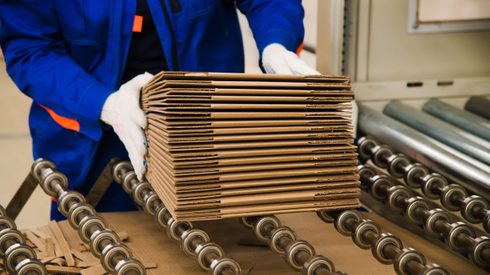In our exclusive interview, Ronald Sasine shares his thoughts on the latest packaging trends, ecommerce, the impact of retailers like Amazon and Walmart and what’s next for corrugated packaging. Watch the interview or read the summary below.
What are the latest packaging trends in the market?
The big trends in the packaging market today are:
- The immediacy and the importance of speedy delivery to homes
- Direct delivery to consumers of products they have traditionally bought from retailers
- A transition from being a more “industrial” and long-term delivery to a much faster, higher turnaround “job shop” type of business
All three trends are about speeding up the way corrugating packaging suppliers have to respond to their customers, whether they are logistics companies, third-party logistics, ecommerce or traditional manufacturers. This will make the corrugated box industry a faster and more dynamic industry going into the next decade.
Will ecommerce continue to have an impact on driving packaging needs?
Ecommerce is going to continue to expand in ways that are perhaps a little bit unpredictable, but the general trend is to a higher level of direct shipments to homes and businesses.
While we might be seeing a little bit of cooling to ecommerce in North America, we are going to see more opportunities for significant expansion of immediate delivery. This means deliveries within several hours, as opposed to the 2-3 day deliveries that we see today. This will drive the need for additional corrugated packaging.
On the other hand, we have seen a massive expansion of ecommerce in North America and Europe, but not so much for the rest of the world markets. Going forward, we are going to see expanded ecommerce growth globally, especially in significant consumer regions in Asia, Latin America and portions of Africa and Southeast Asia in the coming years. This will be a major opportunity for the corrugated packaging business around the world.
What’s next for the corrugated packaging?
The next big step for corrugated packaging is the replacement and substitution of plastic-based shipping materials.
In corrugated boxes, we can currently see things like plastic packaging, plastic wrapping, plastic cushions, dunnage material and other packaging void fill material. All of this has the potential to be replaced by corrugated structure in the future, which means innovations in things like new die cuts and new designs to add rigidity and structure.
This corrugated replacement process is underway and this will be where the industry is headed in the next 5-10 years.
How will businesses like Amazon and Walmart impact packaging design and innovation?
The desire for consumers and businesses to receive their products immediately will continue to drive competition between Amazon Prime, Walmart Plus and other companies that are coming to this race. They will either have a specialized product line or a specialized distribution strategy and both will involve greater corrugated usage.
We also can expect to see more and greater competition for immediate local deliveries to homes and businesses. Organizations like Walmart, with a large installed base of stores, can serve as shipping points for these short mile deliveries. Many large grocery retailers, such as Target, are investigating and working on this same process. Amazon will have to race to keep up as they try to find a way to make faster and shorter deliveries from their larger distribution centers.
Retailers are also consistently concerned about last mile delivery, product safety and product performance. They want to be certain that the corrugated box they have purchased for the delivery of items will make it to the consumer, in a way that satisfies the consumer’s purchase requirement or expectation.
This competition between retailers and the need for more packaging will drive packaging innovation and performance as buyers seek to have lighter weight and higher performing packaging to deliver products in that last mile. In addition, packaging print will also advance as businesses use that as a means and medium for advertising.
Interested in learning more about corrugated packaging and meeting others in the containerboard industry? Join us at our International Containerboard Conference 2022 in Chicago.







